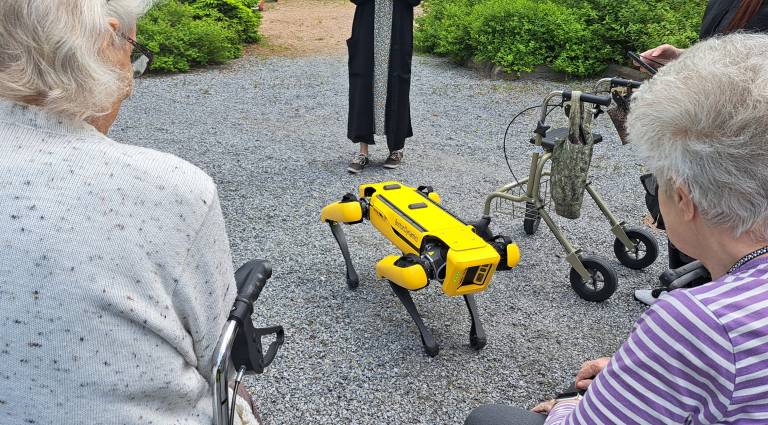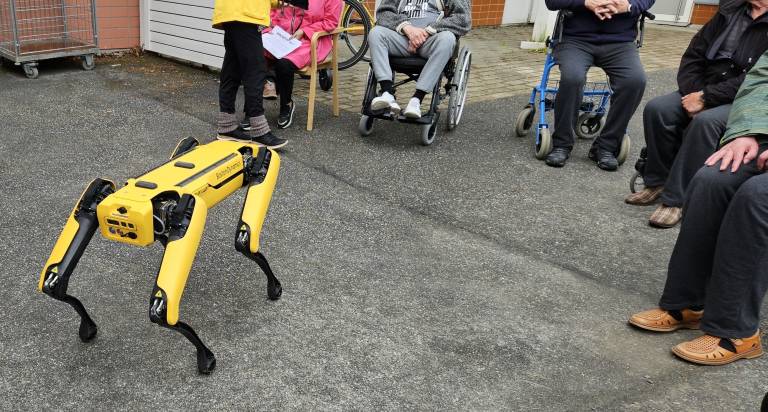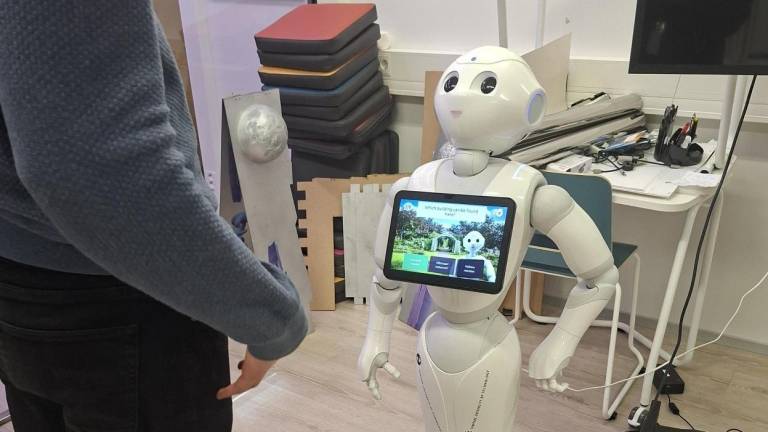To make this homie companion a reality, our team followed the human-centered design process of research, data analysis, ideation, and implementation.
We started by organizing a co-design workshop where we gathered Finnish high schoolers’ opinions and ideas about Furhat. We discovered that the students preferred a robot with a friendly and familiar appearance, such as animated characters and celebrities. As for functionality, Furhat can help with learning various subjects in their school curriculum, including foreign languages. The robot is also suitable for one-on-one interaction and should be customizable.

By reviewing published articles on topics such as social robots, uncanny valley, and language learning, our team learned what to consider when developing our robot. For instance, we realized that the user’s acceptance of robots depends on the robots’ appearance. We should prevent the uncanny valley effect when idealizing social robots’ interfaces. Moreover, users’ engagement with robots can be improved when robots understand feelings, express emotions, and remember what users did.
After analyzing all the data collected from the workshop and research paper, we conceptualized Furhat as a multi-functional language learning buddy in a home environment. Specifically, Furhat, synced with the student’s curriculum and school schedule, can give the student relevant language exercises. By tracking their performance and learning habits, Furhat can personalize the lessons, encourage regular practice, and present feedback directly to the student. A mobile app connected to the robot allows the user to customize Furhat’s settings. We also considered the issues of users’ data privacy and emotional over-bonding risk during the development phase. We built a prototype to showcase parts of this concept using Blockly and front-end coding languages such as Javascript.
In the final Robo Carnival at Nokia Arena, we presented our concept design and had high schoolers experience the prototype. The reaction to Furhat’s appearance was overall positive, and the robot’s facial expressions made the interaction more natural and engaging. We also gathered feedback for our prototype iteration, including Furhat’s various accents, voice recognition, and sensitivity to background sounds.

Through the project, we realized the importance of human-centered design in developing robots. The human-centered design process and principles help us recognize the target users’ needs, pain points, and behaviors. With this data, we can create robots that are practical, easy, and safe to use. The design process also gives us feedback to validate and improve our concept to make robots more beneficial and user-friendly.
The project allowed us to explore the various uses of social robots and apply what we know about user experience to building our first robot prototype. Although the process lasted only seven weeks and our prototype still needs improvement, it was fun to collaborate and create a social robot. We were also inspired to further study and work in the field of Human-Robot Interaction.
UXRO team Diep, Heta, Miho, and Muhammad





